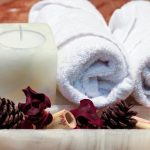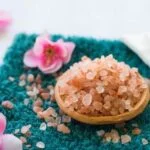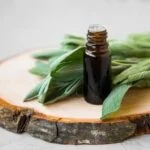Aromatherapy has been used for centuries as a natural way to promote health and well-being. By using essential oils extracted from plants, aromatherapy can help improve both physical and mental health.
One popular method of incorporating aromatherapy into your daily life is through the use of an aromatherapy diffuser. In this article, we will explore the benefits and history of aromatherapy, understand the purpose and function of an aromatherapy diffuser, and provide a step-by-step guide on creating your own DIY aromatherapy diffuser using simple materials.
The practice of aromatherapy dates back thousands of years and has been used in various cultures around the world for its therapeutic properties. From reducing stress and anxiety to improving sleep and concentration, the benefits of aromatherapy are vast. An important tool in harnessing these benefits is the use of an aromatherapy diffuser, which disperses essential oil molecules into the air, allowing you to experience their aromatic effects.
Creating your own DIY aromatherapy diffuser can also be a fulfilling and cost-effective way to enjoy the benefits of aromatherapy in your home or workspace. By using easily accessible materials and following a few simple steps, you can customize your diffuser with your favorite essential oils and create a personalized aromatic experience.
In the following sections, we will discuss the positive effects of using an aromatherapy diffuser, highlight the best essential oils to use in your DIY diffuser, provide helpful tips for maintenance, as well as share unique essential oil blends for different purposes. Whether you are new to aromatherapy or an avid enthusiast, making your own DIY aromatherapy diffuser is a rewarding way to enhance your well-being.
What Is an Aromatherapy Diffuser
An aromatherapy diffuser is a device that disperses essential oils into the air, filling the surrounding space with their natural fragrance. These devices are commonly used in homes, spas, and yoga studios to create a relaxing and calming atmosphere. The purpose of an aromatherapy diffuser is to not only emit pleasant scents but also to provide therapeutic benefits through the inhalation of essential oils.
The function of an aromatherapy diffuser is to break down the essential oil into small molecules and disperse them into the air. This can be achieved through different methods such as ultrasonic diffusion, nebulizing diffusion, evaporative diffusion, or heat diffusion. Each method has its own unique way of dispersing the essential oil particles, resulting in varying levels of aroma intensity and therapeutic effects.
Benefits of Using an Aromatherapy Diffuser
There are numerous benefits to using an aromatherapy diffuser in your home or workspace. Some of these include:
- Promotes relaxation and reduces stress
- Improves sleep quality and enhances mood
- Acts as a natural air freshener with potential antimicrobial properties
- Supports respiratory health and boosts immunity
- Aids in mental clarity and cognitive function
With so many positive effects, it’s no wonder that more people are turning to aromatherapy diffusers as a holistic approach to wellness. Creating your own DIY aromatherapy diffuser can be a fulfilling and cost-effective way to enjoy these benefits right in the comfort of your own home. By following simple steps and using easily accessible materials, you can personalize your aromatherapy experience while reaping all the advantages it has to offer.
Benefits of Using Aromatherapy Diffuser
Aromatherapy diffusers have gained popularity in recent years due to their ability to disperse essential oils and create a soothing and relaxing atmosphere. Using an aromatherapy diffuser not only adds a pleasant fragrance to your space but also offers a range of benefits for your overall well-being. From reducing stress and anxiety to promoting better sleep and improving focus, the positive effects of using an aromatherapy diffuser are numerous.
Stress Relief and Anxiety Reduction
One of the most well-known benefits of using an aromatherapy diffuser is its ability to help reduce stress and anxiety. Certain essential oils, such as lavender, chamomile, and rosemary, have been shown to have calming properties that can help ease feelings of tension and promote relaxation. By filling your space with these soothing scents, you can create a peaceful environment that allows you to unwind and de-stress after a long day.
Improved Sleep Quality
Another positive effect of using an aromatherapy diffuser is its potential to improve sleep quality. Aromatherapy has been used for centuries as a natural remedy for insomnia and other sleep disturbances. Essential oils like lavender, cedarwood, and ylang-ylang can help create a tranquil atmosphere that encourages restful sleep. Diffusing these oils in your bedroom before bedtime can promote relaxation and signal to your body that it’s time to wind down for the night.
Mood Enhancement
In addition to reducing stress and improving sleep, using an aromatherapy diffuser can also help enhance your mood. Certain essential oils, such as citrus scents like orange or lemon, are known for their invigorating and uplifting properties. By dispersing these mood-boosting fragrances into your home or workspace, you can create a more positive and energizing environment that promotes mental clarity and emotional well-being.
Overall, incorporating an aromatherapy diffuser into your daily routine can have a wide range of positive effects on both your physical and mental health. Whether you’re looking for stress relief, better sleep quality, or simply want to elevate your mood, using an aromatherapy diffuser with the right essential oils can make a noticeable difference in how you feel on a daily basis.
Essential Oils for Aromatherapy Diffuser
Lavender
One of the most popular essential oils used in aromatherapy, lavender oil is known for its soothing and calming properties. It is often used to promote relaxation, alleviate anxiety, and improve sleep quality. When using an aromatherapy diffuser, adding a few drops of lavender oil can create a peaceful and tranquil atmosphere in your home.
Peppermint
For an energizing and invigorating aroma, peppermint essential oil is the perfect choice. Its refreshing scent can help boost energy levels and improve focus and concentration. When used in an aromatherapy diffuser, it can also aid in relieving headaches and sinus congestion, making it a versatile option for everyday use.
Eucalyptus
When looking to clear the airways and promote respiratory health, eucalyptus essential oil is an excellent option for your DIY aromatherapy diffuser. Its strong, fresh scent can help alleviate symptoms of colds and allergies, making it a great choice during the winter months or allergy season.
In addition to these essential oils, other popular options for use in an aromatherapy diffuser include citrus oils like orange and lemon for a mood-boosting effect, as well as calming oils like chamomile and ylang ylang for relaxation. Experimenting with different essential oils can help you find the perfect blend to suit your needs and preferences when using your DIY aromatherapy diffuser at home or work.
How to Make Your Own Aromatherapy Diffuser
Aromatherapy has been used for centuries as a natural way to promote health and well-being. By harnessing the power of essential oils, aromatherapy can have a positive impact on both physical and mental health. One popular way to incorporate aromatherapy into your daily routine is by using an aromatherapy diffuser. These devices are designed to disperse essential oils into the air, allowing you to enjoy their therapeutic benefits.
Making your own aromatherapy diffuser at home can be a fun and rewarding DIY project. Here’s a step-by-step guide on creating your own DIY aromatherapy diffuser using simple materials:
1. Choose Your Container: Start by selecting a small glass or ceramic container to serve as the base of your DIY diffuser. This could be a small vase, bowl, or even a mason jar.
2. Add Your Carrier Oil: Once you’ve chosen your container, fill it about 3/4 full with a carrier oil such as sweet almond oil or fractionated coconut oil. This will act as the base for dispersing the essential oils.
3. Mix in Essential Oils: Next, add several drops of your chosen essential oils to the carrier oil. Popular options for relaxation include lavender, chamomile, and ylang-ylang, while invigorating blends may include peppermint, eucalyptus, and citrus oils.
Creating your own aromatherapy diffuser allows you to customize the scents and blends according to your preferences and needs. With just a few simple materials, you can enjoy the therapeutic benefits of aromatherapy in your home or workspace through your very own DIY diffuser.
Tips for Using Aromatherapy Diffuser
When using a DIY aromatherapy diffuser, there are several tips to keep in mind to ensure that you get the most out of your experience and maintain the diffuser properly. Firstly, it’s important to clean your diffuser regularly to prevent any buildup of essential oils or residue. Depending on the frequency of use, aim to clean your diffuser at least once a week by following the manufacturer’s instructions for proper cleaning.
Another helpful tip is to experiment with different essential oil blends to find what works best for you. Whether you’re looking for relaxation, energy, or better sleep, there are various essential oil combinations that can cater to your needs. For example, lavender and chamomile create a calming blend perfect for bedtime, while peppermint and eucalyptus can help invigorate and uplift your mood.
Additionally, be mindful of where you place your DIY aromatherapy diffuser in your home or workspace. It’s best to position the diffuser on a stable surface away from direct sunlight and drafts. This will not only prevent any damage or discoloration from occurring but also ensure that the scent is evenly dispersed throughout the room.
Incorporating these tips into your daily routine with your DIY aromatherapy diffuser will enhance your overall experience and allow you to fully enjoy the benefits of aromatherapy in your environment.
| Tips | Details |
|---|---|
| Clean regularity | Aim to clean at least once a week following manufacturer’s instructions |
| Experiment with blends | Try different essential oil combinations based on desired effects (relaxation, energy, etc.) |
| Proper placement | Position on stable surface away from direct sunlight and drafts for even dispersion of scent |
Aromatherapy Diffuser Recipes
When it comes to using an aromatherapy diffuser, creating the right essential oil blend can significantly enhance the benefits of this practice. Whether you’re looking to relax after a long day, boost your energy levels, or improve the quality of your sleep, there are specific essential oil blends that can help achieve these goals.
For relaxation purposes, consider blending lavender, chamomile, and ylang-ylang essential oils. Lavender is known for its calming and soothing properties, while chamomile has been used for centuries to promote relaxation and ease stress. Ylang-ylang adds a sweet floral scent that can further enhance the relaxing atmosphere in your space.
If you’re in need of an energy boost, try combining peppermint, rosemary, and eucalyptus essential oils. Peppermint is invigorating and refreshing, while rosemary has been shown to improve mental clarity and focus. Eucalyptus adds a crisp scent that can help clear the mind and increase alertness.
For better sleep quality, consider blending lavender (again), cedarwood, and bergamot essential oils. Lavender’s calming properties can help promote a sense of tranquility before bedtime. Cedarwood is known for its grounding effect and can help create a peaceful environment for sleep. Bergamot adds a citrusy yet soothing aroma that complements the other oils in this blend.
Now that you have some essential oil blend ideas at hand for different purposes such as relaxation, energy & improved sleep from creating your own DIY aromatherapy diffuser using simple materials via an aromatherapy diffuser DIY setup”. You can experiment with different ratios of these oils to find what works best for you based on personal preference.
| Purpose | Essential Oils Blend |
|---|---|
| Relaxation | Lavender + Chamomile + Ylang-Ylang |
| Energy | Peppermint + Rosemary + Eucalyptus |
| Sleep Improvement | Lavender + Cedarwood+ Bergamot |
Conclusion
In conclusion, the practice of aromatherapy has been valued for centuries for its numerous benefits, including relaxation, stress relief, and improved overall well-being. By utilizing an aromatherapy diffuser, individuals can easily incorporate the healing properties of essential oils into their daily routines.
The use of essential oils in conjunction with a diffuser creates a calming and soothing ambiance in a home or workspace, and can also be tailored to address specific needs such as energy boost or better sleep quality.
Additionally, creating your own DIY aromatherapy diffuser can be a satisfying and fulfilling experience. Not only does it allow for customization based on personal preferences, but it also promotes a sense of accomplishment knowing that you have created something that contributes to your overall wellness. Making your own aromatherapy diffuser can also be cost-effective, using simple materials readily available at home or in local stores.
As we’ve discussed the importance of aromatherapy and the satisfaction derived from creating your own DIY aromatherapy diffuser, it’s clear that this practice offers both mental and physical benefits. Whether you are seeking relaxation, energy enhancement, or better sleep quality, incorporating this ancient holistic therapy into your lifestyle through the use of an aromatherapy diffuser is an accessible and enjoyable way to promote a healthier and balanced life.
Frequently Asked Questions
How Do You Make a Homemade Aromatherapy Diffuser?
Making a homemade aromatherapy diffuser is relatively simple. First, you will need a small glass or ceramic jar with a narrow opening. Then, fill it mostly with water and add a few drops of your chosen essential oil. Finally, insert some reed sticks into the jar to soak up the oil and diffuse the scent into the air.
What Is the Best Oil for Homemade Diffuser?
The best oil for a homemade diffuser really depends on personal preference and the desired effect. Some popular options include lavender for relaxation, peppermint for energy-boosting, and lemon for a refreshing scent. Experimenting with different oils can help you find the perfect one for your needs.
What Ingredients Do You Need to Make Diffusers?
To make homemade diffusers, you will need essential oils of your choice, a small glass or ceramic jar, water, and reed sticks or bamboo skewers. These are the basic ingredients required, but you can also add other decorative elements like dried flowers or citrus peels for an extra touch.
Mixing and matching different scents and visuals can create a unique diffuser that suits your style and preferences.

Are you looking for a natural way to improve your health and wellbeing?
If so, aromatherapy may be the answer for you.





